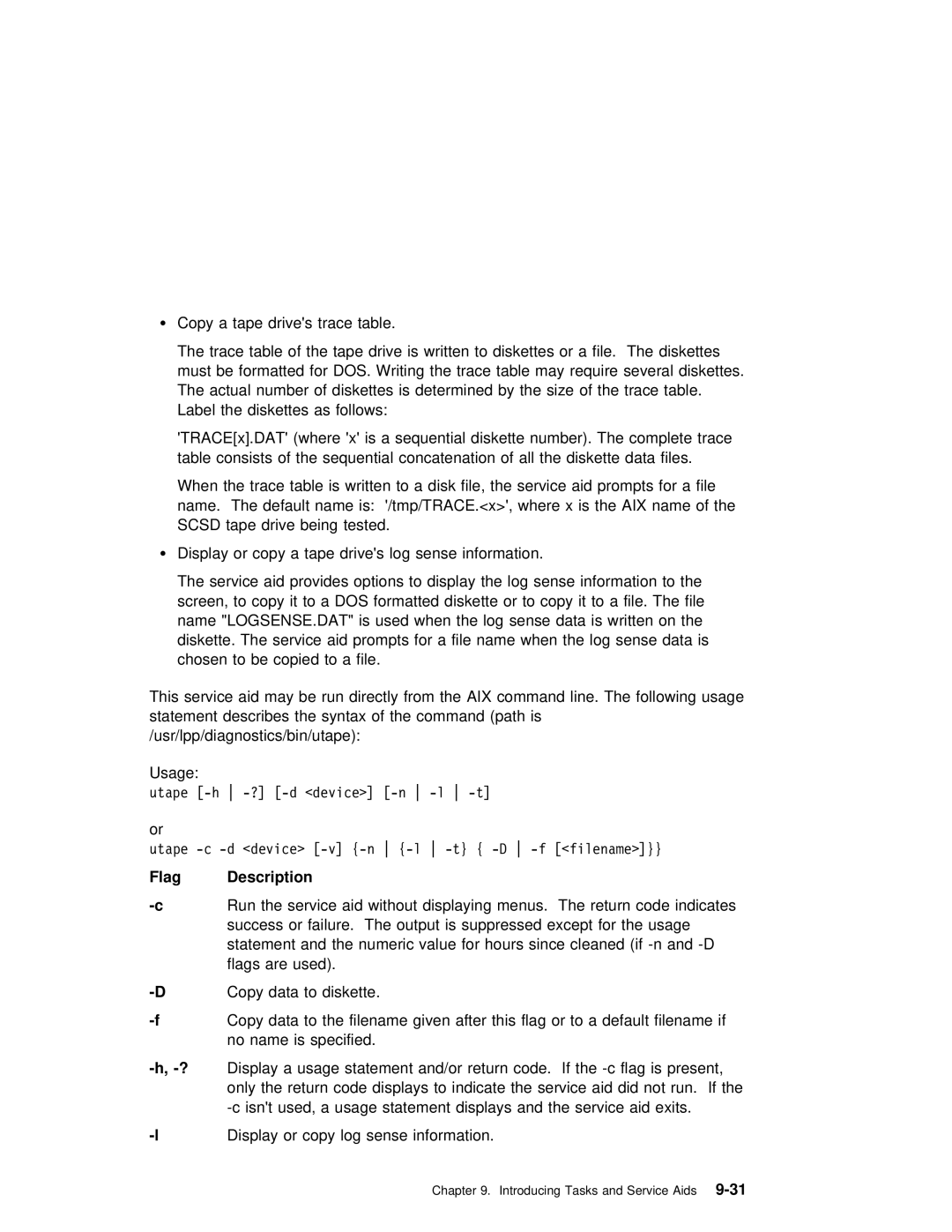ŸCopy a tape drive's trace table.
The | trace | table | of | the | tape drive is written to | diskettes or a file. The | ||||||||||||||||||||
must | be | formatted for | DOS. Writing the trace table | may | require | several | diske | |||||||||||||||||||
The | actual | number of diskettes is determined by | the | size | of | the | trace | tab | ||||||||||||||||||
Label the diskettes as follows: |
|
|
|
|
|
|
|
|
|
|
|
|
|
|
|
| ||||||||||
'TRACE[x].DAT' | (where | 'x' | is a sequential diskette number). | The | complete | trace |
| |||||||||||||||||||
table | consists | of | the | sequential | concatenation | of | all | the | diskette | data | files. | |||||||||||||||
When | the | trace table | is | written | to | a | disk | file, | the | service | aid | prompts | fo | |||||||||||||
name. The default | name | is: '/tmp/TRACE.<x>', where x is | the | AIX | name | of | the |
| ||||||||||||||||||
SCSD | tape | drive | being | tested. |
|
|
|
|
|
|
|
|
|
|
|
|
|
|
|
| ||||||
Ÿ Display |
| or | copy | a | tape | drive's log | sense | information. |
|
|
|
|
|
|
|
|
| |||||||||
The service aid provides options to display the log | sense | information | to | the | ||||||||||||||||||||||
screen, | to | copy | it | to a |
| DOS formatted | diskette | or | to copy it to a file. | |||||||||||||||||
name "LOGSENSE.DAT" is used when the log sense data is | written | on | the |
|
|
|
| |||||||||||||||||||
diskette. | The | service | aid | prompts | for | a | file name | when | the log | sense | data | |||||||||||||||
chosen | to | be | copied | to | a | file. |
|
|
|
|
|
|
|
|
|
|
|
|
|
|
|
| ||||
This service aid may be run directly from the AIX command line. The following us statement describes the syntax of the command (path is /usr/lpp/diagnostics/bin/utape):
Usage:
utape
or
utape
Flag | Description |
|
|
|
|
|
|
|
|
|
|
|
|
|
|
|
| |
Run | the | service | aid without displaying menus. The return code indicates | |||||||||||||||
| success or failure. The output is suppressed except for the usage |
| ||||||||||||||||
| statement and | the | numeric | value | for hours | since | cleaned | (if | and | |||||||||
| flags are | used). |
|
|
|
|
|
|
|
|
|
|
|
|
| |||
Copy | data | to | diskette. |
|
|
|
|
|
|
|
|
|
|
| ||||
Copy | data | to the filename given after this flag or to a default filena | ||||||||||||||||
| no name | is | specified. |
|
|
|
|
|
|
|
|
|
|
| ||||
Display | a | usage | statement and/or return code. If | the | is | presen | ||||||||||||
| only | the | return code | displays | to | indicate | the | service | aid | did | not | run. | ||||||
| usage statement | displays | and | the | service | aid | exits. | |||||||||||
Display | or | copy | log | sense | information. |
|
|
|
|
|
|
|
| |||||
Chapter 9. Introducing Tasks and
